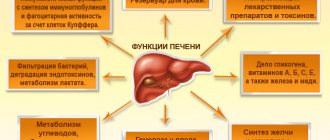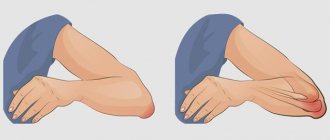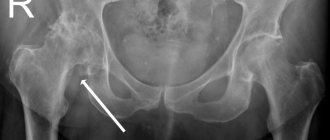Many people believe that the spleen is not such an important organ to focus on. The reason lies in the fact that a person can live without this organ. But, despite this, a person’s life becomes no better, and in some cases even worse, because he performs a number of very important functions, such as controlling the level of elements in the blood, regulating the clotting process and maintaining balance in the body. That is why it is worth paying close attention to when pain in the spleen area appears, as it can be caused by serious diseases. What are the symptoms of spleen disease?
Publications in the media
Types of injuries • Penetrating wounds (knife, gunshot). Injury to the spleen can occur with injuries to the abdomen, middle or lower chest • Blunt closed trauma often occurs in road traffic accidents. Damage to the spleen leads to profuse internal bleeding and shock. In 5% of cases with blunt injuries, splenic rupture can be delayed (two-stage) • Two-stage rupture •• First, a subcapsular hematoma occurs. As a result of lysis of red blood cells, the osmolarity of the contents of the hematoma increases, which leads to its enlargement and rupture of the wall (splenic capsule) •• About 75% of delayed ruptures occur 2 weeks after the initial injury and are manifested by acute shock resulting from profuse internal bleeding • Iatrogenic injuries are formed due to strong traction on the splenic ligaments or incorrect position of retractors during abdominal operations. In 20% of cases, the indication for splenectomy is iatrogenic trauma • Spontaneous ruptures occur as a result of splenomegaly of various origins (for example, with mononucleosis, leukemia, malaria).
Clinical picture • Internal bleeding and shock: pallor of the skin, cold sweat, tachycardia, decreased blood pressure, Hb, Ht with accumulation of blood in the subdiaphragmatic space - a “vanka-stand” symptom (increased pain when the patient is horizontal, dullness of percussion sound in sloping places abdominal cavity) • Symptoms of peritoneal irritation: muscle tension in the abdominal wall, Shchetkin-Blumberg, Voskresensky symptoms, etc. • If the chest cavity is injured, there are signs of pneumo- and hemothorax.
TREATMENT . It is rarely possible to save an organ, only with superficial and minor injuries.
• With small ruptures of the capsule, bleeding can sometimes be stopped by electrocoagulation and the application of a hemostatic sponge.
• Splenectomy is the method of choice for massive injuries, especially in combination with damage to other organs •• Indications for splenectomy: extensive trauma to the spleen, bleeding from dilated veins of the esophagus caused by thrombosis of the splenic veins •• Complications after splenectomy ••• Atelectasis of the lower lobe of the left lung ( occurs often) ••• Subphrenic abscess in combination with left-sided effusion pleurisy ••• Postsplenectomy sepsis. The disease begins with nonspecific symptoms resembling moderate pneumonia, then high fever appears, and shock is possible. In adults who undergo splenectomy due to trauma, the risk of developing sepsis is 0.5–0.8%.
ICD-10 • S36 . 0 Spleen injury
What is it about?
This injury is quite common in falls from great heights, road accidents, natural, industrial and railway accidents. A splenic rupture can provoke the development of internal bleeding. To prevent the development of this complication, it is necessary to perform the operation as soon as possible.
Damage to the spleen is most often observed in able-bodied middle-aged people, which is caused by their higher physical activity compared to children and the elderly. According to statistics, able-bodied people are more likely to find themselves in extreme situations, risking a similar injury. Depending on the number of organs affected, such damage may be:
- Isolated, when only the spleen is affected.
- Multiple, when damage to several organs has occurred.
In most cases, the mesentery, liver and colon are damaged simultaneously with the spleen. Fractures of the ribs and spine, injuries to the chest, fractures of the bones and pelvis, and traumatic brain injuries are also possible. The elimination of such pathologies is carried out by abdominal surgeons and traumatologists. The spleen is a parenchymal organ that is located in the left side of the abdominal cavity, behind the stomach.
This organ is not one of the vital organs, although it performs a number of important functions. This is the main source of lymphocytes, producing antibodies and destroying old red blood cells and platelets. The spleen also functions as a blood depot.
Possible complications and consequences of spleen injuries
Complications of splenic injury include recurrent bleeding, cyst formation, and necrosis. In addition, residual thrombosis and complications associated solely with laparotomy are possible after surgery.
Complications of splenectomy include bleeding from short vessels of the organ. The most feared but rare complication is infection with encapsulated organisms such as pneumococci.
The materials used to compress the splenic capsule during splenography are often synthetic and may mimic abscess blisters on postoperative CT scans. Once the spleen has been removed, patients should automatically be permanently at risk for encapsulated infections.
Splenic angioembolization may result in noninfectious associated febrile events, sympathetic pleural effusion, and abscess formation. Femoral arteriovenous fistulas and iliofemoral pseudoaneurysms may also develop.
In some cases, after treatment for a ruptured spleen, other complications are possible.
- Post-traumatic pseudocysts.
- Sterile abscesses and pancreatitis.
- Thrombocytosis.
- Damage to the pancreas, subphrenic abscess.
- Stretching.
Recent studies show that the mortality rate from splenic injuries is quite high even in the conditions of first-class trauma centers. Overall, the prognosis tends to vary. But complete removal of the spleen increases the risk of developing fatal and debilitating infections during the remainder of the patient's life.
The risk of complications or failure of conservative treatment is higher in patients over 55 years of age, especially women, and is associated with increased mortality. Multisystem injuries with simultaneous damage to the liver, pancreas, and intestines increase the likelihood of splenectomy.
Terms of rehabilitation
After surgery and removal of the organ, the patient will need several months to restore the functionality of the body. Despite the short period of rehabilitation after organ removal, it will be quite difficult. During the rehabilitation process, it is necessary to take postoperative therapy, adhere to bed rest and follow an individually selected diet.
The patient's diet should consist of proteins, but exclude:
- sweets;
- fatty fried foods;
- flour products;
- conservation;
- marinades;
- spices and all kinds of herbs.
The diet should include:
- broths and soups;
- dietary cereals;
- fish (red only).
To fully restore strength, the patient should consume approximately 2 thousand kcal daily.
Video - All about the spleen
Treatment of pathology
When a patient develops alarming symptoms, he needs immediate first aid.
| Priority actions | Description |
| The patient is placed on his back | If a person feels a push in the side from the side of the spleen, then he needs to be laid on his back, then there should be a small cushion under his head |
| Press in the middle of the chest | This action will help stop heavy bleeding that occurs due to organ rupture |
| Repeat chest compressions | Pressure manipulation helps block internal bleeding until the ambulance arrives |
| Apply a cold compress | It is recommended to apply cold compresses to the abdominal area to block bleeding. |
It is worth noting that the causes that provoke this pathology can cause both single large ruptures and small-area but multiple damage to this organ. Typically, a large rupture of the spleen tissue will immediately show the symptoms mentioned in this article.
In the second case, symptoms may not appear immediately and may be delayed. Sometimes multiple ruptures of the spleen tissue are diagnosed only when blood oozing through the wounds fills most of the abdominal cavity. Such complications can pose a great risk to human health. Treatment of splenic tissue rupture is carried out only in inpatient conditions. There are two ways to get rid of this problem: surgery aimed at partial removal of tissue, or complete resection of the organ.
It is important to understand that treatment of this pathology, although it will get rid of the main problem, will not be able to completely restore a person’s health. As a rule, in people who have suffered from rupture of splenic tissue, with a successful operation, there is a total decrease in the body’s defenses, loss of immunity and a strong increase in the number of platelets in the blood. These consequences are difficult to eliminate.
Preventive actions
To prevent possible damage to the spleen tissue, you should follow the following basic rules:
- Never break bed rest if you have respiratory viral illnesses.
- Exercise regularly.
- Observe precautions against injury to the spleen area.
- Minimize heavy lifting.
- Pregnant women are advised to wear a bandage.
- Promptly treat infectious and other ailments that may become chronic.
These preventive rules will help minimize the risks of possible splenic rupture.
Reasons that provoke damage and rupture of the spleen
There are many reasons why the integrity of an organ is damaged. It is also worth noting that the spleen can be damaged not only by mechanical factors, but also by pathological processes that are present in the body.
Among the most common reasons are the following:
- Mechanical injuries (force impact on the area where the organ is located).
- Infectious diseases that cause enlargement of the spleen and lead to a critical condition.
- Excessive physical activity.
- High level of blood filling of the organ.
- Difficult process of childbirth.
- Inflammatory processes that are observed in neighboring organs (hepatitis virus, cirrhosis, etc.).
- The occurrence of benign or malignant neoplasms.
- Clonal diseases of the hematopoietic system.
Sometimes it is very difficult to independently diagnose a ruptured spleen and prevent a critical condition. Complex symptoms help specialists establish a diagnosis in the shortest possible time and promptly stop the pathology, preventing consequences after its rupture.
If we consider the clinical picture after rupture of the spleen and competent care, the prognosis for the patient’s life remains favorable.
However, if the patient did not call an ambulance in a timely manner, but self-medicated in the form of painkillers, then death cannot be ruled out.








